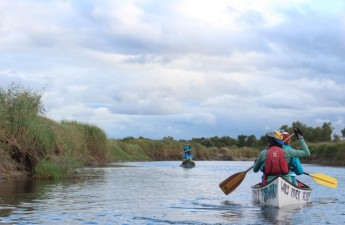
In 2011, I was one of the first two women to paddle the 2,000 miles from Minneapolis to Hudson Bay, recreating Eric Sevareid’s route from Canoeing With the Cree. During our trip, my friend and I paddled by communities along the Minnesota River, Red River, and Lake Winnipeg. We compared these communities and became experts on key components of a thriving riverfront. I found that there was a strong correlation between interaction with water trails and sustainable or growing economies. Several towns along our route were ghost towns or agricultural towns. Like a business, small towns should constantly advertise themselves to increase tourism and the money that flows into their economy.
Historically, towns have chosen to depend on one or two industries: agricultural towns, mining towns, cheese plant towns, etc. I got to thinking — these farms, industries, and energy plants all had one thing in common: the river. It was on that trip that I began to understand the complexities of integrated recreation and the importance of diversified economies.
I believe that water trails can be used to diversify small town economies, to increase tourism, and bring life back to river communities. I’ve seen it done before. I bet you can think of a small town like this, too — a place within a few hours of where you live; a place you can go for the weekend to bike, hike, canoe; a place with a coffee shop, an interpretive center, and a Bed and Breakfast; a place where you can unwind after a long day of recreating with a beer by the water. Sounds good, doesn’t it? Every town along a water trail has the potential to be that weekend get-away.
Watch Natalie present on the economic benefits of river recreation to local communities as a part of our Blue Trails Guide webinar series!
Photo Credit: Natalie Warren, Wild River Academy

One Comment